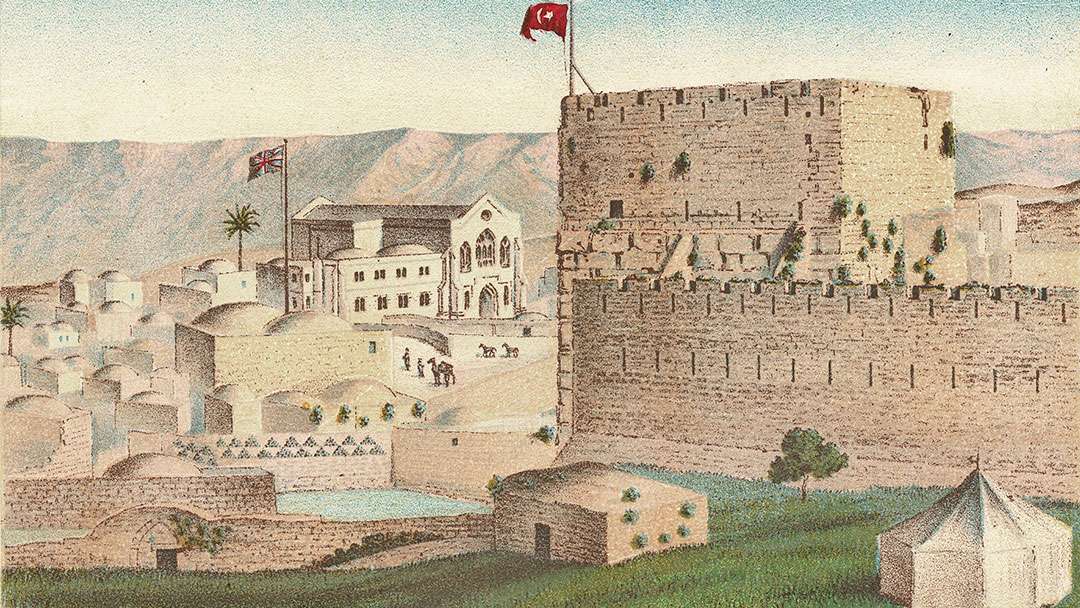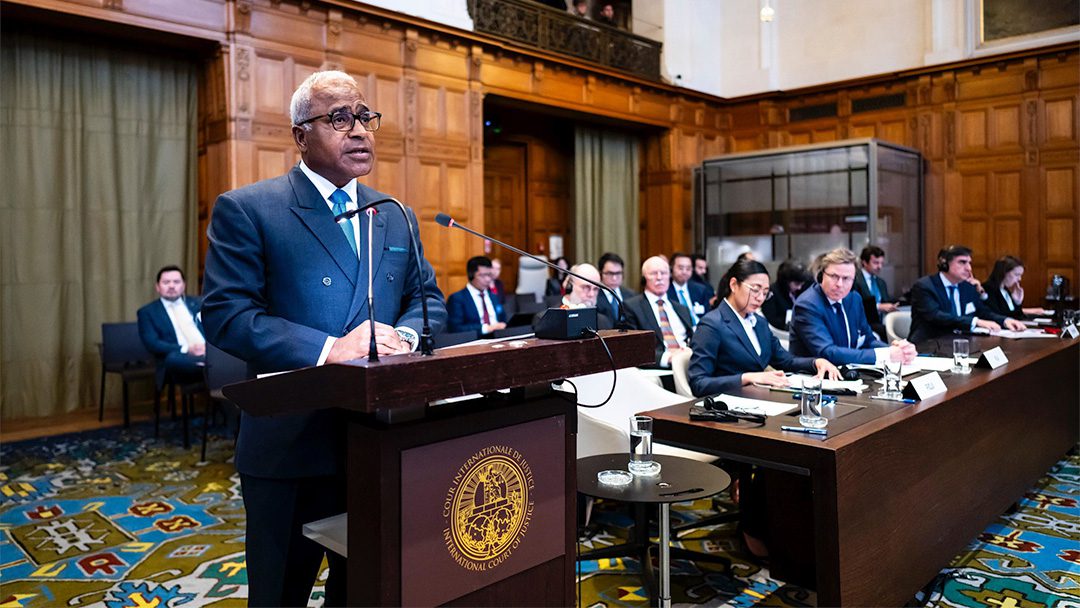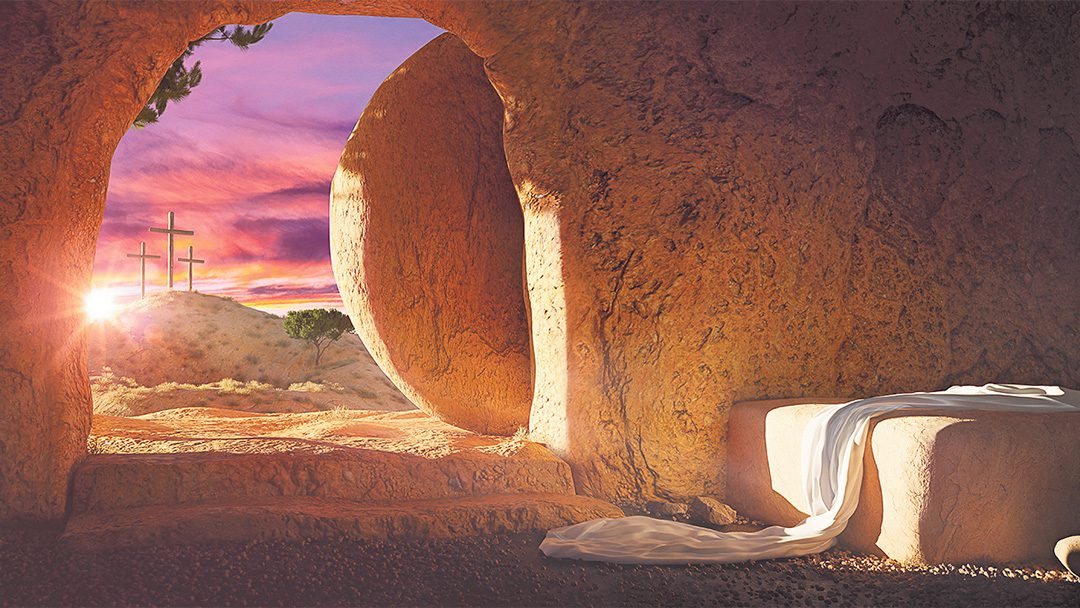Restoring the Jewish Jesus to Jerusalem
In 2023 Jewish and Christian peoples the world over are celebrating the 75th anniversary of the establishment of the State of Israel. However the year 2023 also marks another equally significant event – it is 200 years since the Jewish Jesus was restored to Jerusalem. On 15 December 1823 an evangelical Anglican society from Britain named CMJ[i] decided to officially establish their base in Jerusalem.
CMJ had been established in London in 1809 as a non-denominational society dedicated to introducing Jesus to the Jewish people. It became an Evangelical Anglican society in 1815. CMJ also encouraged Jewish followers of Jesus in their faith; educated the Gentile Church about their Jewish heritage; and encouraged the physical restoration of the Jewish people to the land of Israel.
Its founder was a German-born Jewish follower of Jesus named Joseph Frey, and among its early vice-Presidents was William Wilberforce MP. He was followed by Lord Shaftesbury who was in leadership of the Society for some fifty years. Any Christian work in which these leaders of evangelical Christianity were involved must be worthy of serious consideration.
What’s of particular importance in these anniversary events is the concept of restoration – of the Jewish Jesus to Jerusalem after an absence of some 1700 years and the physical restoration of Israel after 1800 years. Both are closely linked.
The Period of the Exile
A restoration infers that there must first have been an exile. Indeed there was. This dual exile and restoration are symbolised by two buildings in Jerusalem, the Citadel or Tower of David and the Anglican Christ Church directly opposite.
The Citadel was mostly built by King Herod as a fortress to protect his palace and Jerusalem. Many leading scholars now contend that the trial of Jesus before Pontius Pilate took place in this area.
When the Romans destroyed Jerusalem, including the Temple, during the First Revolt in 70 AD, they left part of this domineering building remaining, to be, as the historian Josephus stated, a symbol of Roman triumph and Jewish defeat. Jewish defeat resulted in physical exile from the land of covenant promise.
The year 2023 also marks another equally significant event – it is 200 years since the Jewish Jesus was restored to Jerusalem
Then after the Second or Bar Kockba Revolt, 132-135 AD, the Romans were again victorious and again exiled many of the Jewish survivors. They also changed the name of Jerusalem to Aeolia Capitolina and the name of the land of Israel to Syria Palestina – thereby attempting to severe all Jewish connections to the city and land. Both of these names are synonymous to pagan entities.
They also forbade Jewish people from living in Jerusalem and the region of Judea – including those Jewish people who believed that Jesus was the Messiah and who were in covenant union with Him. (Jeremiah 31: 31-34.)
The Jewish Church then basically ceased to exist in Jerusalem. Until that point there had been some fifteen Jewish leaders, or bishops, of this Jewish Church.
The Period of Exile
There was a definite disconnect at this time, a time synonymous to the physical exile of Israel and the exile of the Jewish Jesus from Jerusalem. The Church thereafter became a Gentile Church, and like elsewhere, the face of the Jewish Jesus became a Gentile face. This Gentile face of Jesus was equated by the Jewish people to the terrible persecution meted out by the Gentile-led Church against them through the following centuries.
During those very same centuries numerous empires took control over Jerusalem, each upholding ideologies and world-views which were contrary to Almighty God’s purpose for the City of the Great King – according to which Jesus was destined to return and reign there as the King of Israel and over the redeemed of the nations.
The most significant of these ideologies was Islam which maintained that the land of Israel was part of the dar al Islam – the territory of Islam. Under Islam, in whatever guise, there could be no physical restoration of Israel.
Yet today the Citadel or Tower of David is the Museum of Jerusalem which is the capital of the restored Jewish State – and the Israeli flag flies from its summit. How did this happen?
Basically it was a miracle engineered by Almighty God through world geo-politics and which involved many different avenues, nations, institutions and people. I term it God’s geo-political plan for world redemption. This physical restoration was brought about by the same dynamics which saw the return of the Jewish Jesus to Jerusalem and resulted in the building of Christ Church.
Tangible Restoration Begins
When CMJ decreed to establish their presence in Jerusalem in 1823 they began the process of restoring the Jewish Jesus to the City and Land. Opposition from the ecclesiastical leaders of Jerusalem, especially the Muslims, though, rendered making their permanent presence very difficult. CMJ’s supporters then prayed for both a British consulate in Jerusalem and for a change of regime. Then in 1832 the more lenient Egyptians replaced the intolerant Turks and CMJ established the first Protestant base in Jerusalem in 1833.
The presence of British subjects, together with geo-political factors, resulted in the British Government establishing a consulate in Jerusalem in 1838. Among the first instructions to Consul Young were ‘to afford protection to the Jews generally’. This was an extraordinary step. The consulate and CMJ were closely aligned, and Consul Young wrote to the Foreign Secretary: ‘If a Jew … were to attempt to pass the door of the Church of the Holy Sepulchre, it would in all probability cost him his life – this is not very Christian like, considering Christ Himself was a Jew.’[ii]
Young also wrote:
There are two parties here who will doubtless have some voice in the future disposition of affairs – ‘The one is the Jew – unto whom God originally gave this land for a possession, and the other, the Protestant Christian, his legitimate offspring.’ Of both of these Great Britain seems the natural guardian.[iii]
Also in 1838 CMJ purchased the first property to be owned by Protestants in Jerusalem – opposite the Citadel. In that year Rev John Nicolayson and several Jewish followers of Jesus began daily prayer meetings – in Hebrew – using the Anglican Book of Common Prayer which had been translated into Hebrew in London.
When a conflict broke out in 1840 (the ‘Syrian Crisis’) Britain assisted Turkey in ousting the Egyptians. CMJ thereafter led the way in encouraging the British Government to call for Israel’s physical restoration. In fact one of their Jerusalem staff, Erasmus Scott Calman, wrote a Memorandum on Israel’s restoration which was utilised by the British Government in its to call to the Ottoman Turkish Government (Porte) for this Jewish restoration
Although the desired physical restoration didn’t occur, it did provoke reactions which were far-reaching. The eminent British Jewish historian Leonard Stein wrote in his foundational book The Balfour Declaration of these Evangelical Christians:
The real force behind the movement for the restoration of the Jews to Palestine was the ‘religious party’… a body of devout and high-minded English Christians who, looking at the ferment in the East, believed that the time was at hand for the fulfillment of prophecy by the return of the Chosen People to the Holy Land, and that it was God’s will that the British nation should be the instrument for achieving this purpose.[iv]
There is little doubt that these Jewish and Gentile followers of Jesus, mostly Anglicans, were the pioneer ‘Zionists’, to use a contemporary word, to live in Jerusalem – although in those days the word ‘restorationist’ would have been a more commonly used.
One important outcome of the 1840 ‘Syrian Crisis’ was the establishment of the Anglo-Prussian Protestant Bishopric in 1841 – and the appointment of a German speaking former rabbi, Michael Solomon Alexander, as the first Anglican-Protestant bishop in Alexander.
Alexander’s appointment and arrival on 21 January 1842 also heralded the beginning point of Prussian/German involvement in the city and land. Bishop Alexander was the first bishop of Jewish heritage since 135 AD and this move was a further sign of the restoration of the Jewish Jesus to Jerusalem.
[i] Church’s Ministry among Jewish People.
[ii] Young to Foreign Office, National Archives No 78/368, No 131, cited in Hyamson, A. The British Consulate in Jerusalem, Vol. 1, p. 6.
[iii] Ibid, No. 8.
[iv] Stein, L. The Balfour Declaration (Jerusalem and London, 1961), p. 10.












0 Comments